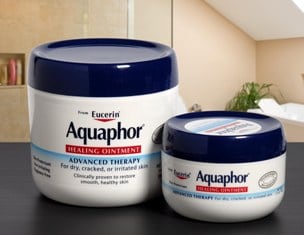
UK-based packaging firm RPC will manufacture a lightweight container for the 500 ml version and double wall jar for the 150 ml size. The new crème jars will be produced at the RPC Bramlage-Wiko USA site in Morgentown, Pennsylvania.
‘Light-weighting’ its packaging
An RPC source told CosmeticsDesign.com USA that the primary reasons for choosing this pack were light-weighting, and localised production.
Aquaphor and Eucerin was previously retailed in thick wall crème jars, but Beiersdorf USA says it wanted to reduce the amount of packaging material for improved environmental and cost efficiencies.
RPC has developed a thin wall outer shell based on the original 500ml thick wall design, while the 150 ml version was light-weighted.
Reduce weight but maintain aesthetics
The white outer wall is in white, which RPC says will accentuate branding information on the transparent labels used by Beiersdorf.
The lid is in blue, white and teal to match the brand colors but also for an eye-catching contrast, according to RPC. All parts are injection molded in polypropylene.
“We are delighted with RPC Bramlage-Wiko’s ability to provide a solution that minimizes waste and simplifies production, while maintaining the familiar shape of the Aquaphor brand,” comments Beiersdorf.
Lightweighting a key trend
Many cosmetics companies are turning to ‘light-weighting’ as key method to reduce waste and make it more sustainable.
Recently consumer goods giant P&G announced that it uses a computer modeling system that simulates the pressures placed on plastic packaging during filling, distribution and consumer use and suggests the minimum material that needs to be used. Via this method, the company claims to have saved about 2,200 tonnes of plastic per year.
Reducing the packaging used in each product, or making it more lightweight, is a good ‘invisible’ change, according to P&G.
